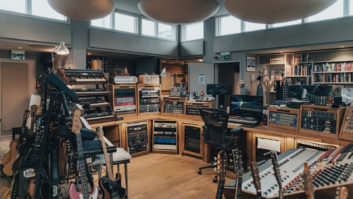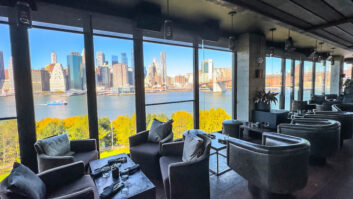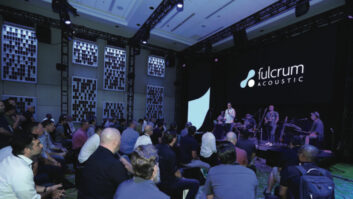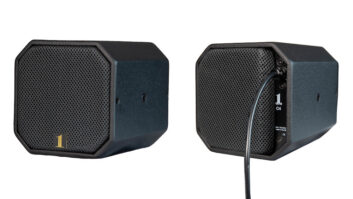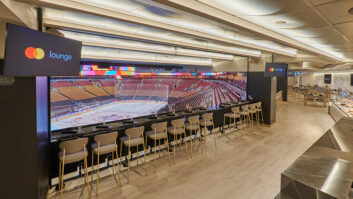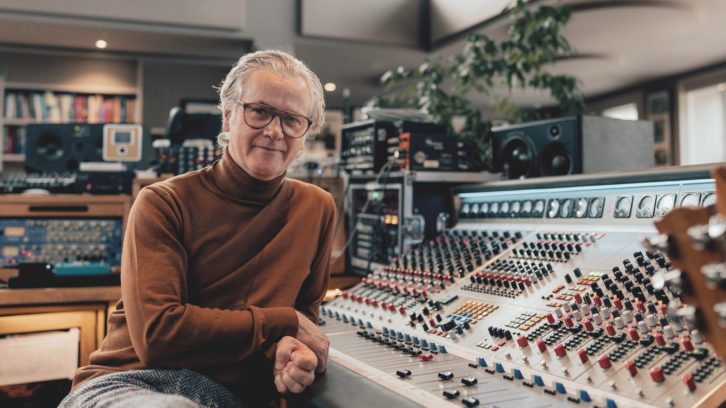
London, UK (March 24, 2022)—Guy Chambers, one of the U.K.’s most successful living songwriters, has a discerning eye to go with a dependable ear for melody. He also has an ear for audio quality, as demonstrated by the vintage and modern outboard gear and instruments arrayed around the mix position in Studio 1 at Sleeper Sounds, his production facility in West London.
“There are a lot of beautiful things in my studio; a lot of beautiful instruments, guitars and keyboards, and works of art and photos,” Chambers says.
Now there is one more aesthetically—and sonically—pleasing object in the room: a 16-channel ZR SOHO mixing desk from Sound Techniques, the first of its kind in the world. “I wanted something very simple and that looks beautiful. I also wanted to find something with a history,” he adds.
History is important to Chambers, certainly. The new console replaces a vintage EMI TG12345 that was in Studio 3 at Abbey Road Studios before being outfitted with wheels to become part of a mobile rig that visited the country’s churches and halls to record orchestral music. “One of the reasons I bought it was that my dad, a flute player, was in the London Philharmonic,” says Chambers, adding that he most likely was recorded through that very desk.
Modern console options were considered, including several of the usual suspects. “I also looked at vintage desks,” he explains. “But to me, this Sound Techniques desk has all the qualities of a vintage desk without any of the headaches. So I thought, ‘Why not get a new desk?’ Part of the consideration for me was the fact that Sound Techniques has backup in England.”
VINTAGE BECOMES NEW
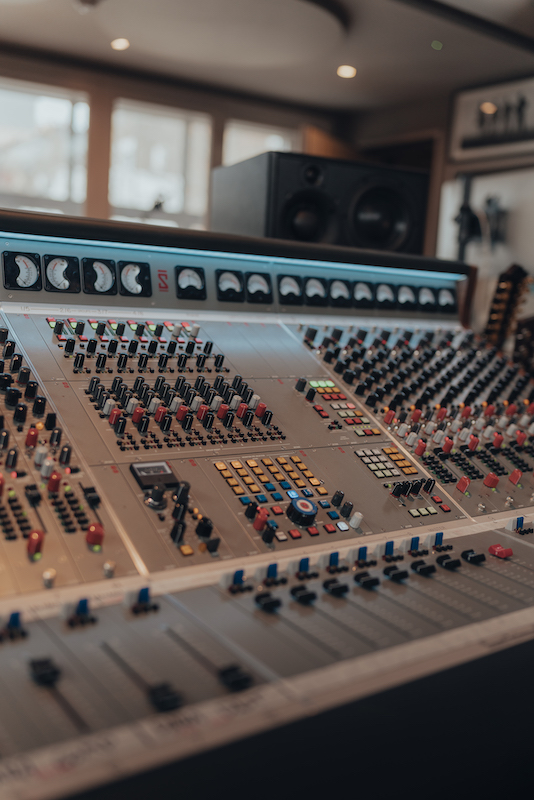
You could be forgiven for thinking that Sound Techniques is a vintage brand. The company first emerged back in 1965, when Geoff Frost and John Wood, former staff engineers at Levy’s Sound Studio in London, hand-built a one-of-akind mixing console at their new studio, Sound Techniques, in an old dairy near King’s Road in Chelsea.
Pink Floyd, Jethro Tull, Fairport Convention, Nick Drake and many others flocked to the studio, attracted by the sound quality of the productions coming out of the facility. As word spread, other London studios, including Trident and De Lane Lea, clamored to buy their own Sound Techniques A Range desks, as they were named, and a brand was born.
After a pretty good run, the Sound Techniques studio and manufacturing operation closed in 1976 when Frost and Wood were unable to renew the lease on their building, which was soon taken over by Olympic Studios. No functioning A Range consoles remain in operation today, so the Sound Techniques name might easily have faded away.
Then in 2015, U.S. studio owner and English console aficionado Danny White and partners acquired the company and the associated intellectual property directly from Frost. White, based in Southern California, has re-engineered the mechanical aspects of the desk while producing a faithful, modern reproduction with updated electronics.
“To be a part of reestablishing one of England’s greatest audio brands has been a once in a lifetime privilege,” White says. “With Gareth Connor, Graham Miles and Neil McCombie in West Yorkshire working on the audio, and our group in the States working the mechanical, we created something special. What you see is all American. What’s under the hood, is all England.”
White heralded the return of the brand at the 2018 NAMM Show by displaying a huge 48-input ZR prototype board. Sleeper Sounds’ ZR SOHO is the first full production model to come off the line.
STARTING WITH SONGS
Although Chambers has worked with a long list of artists, including Rufus Wainwright, Carole King, Hillary Duff, Kylie Minogue, Diana Ross, Tom Jones and dozens of others, his name is not that well known in the United States. Elsewhere, Chambers came to prominence primarily through his collaborations with Robbie Williams, a former member of U.K. pop superstars Take That. Williams and Chambers first worked together in 1997 on the singer’s debut solo album, Life Thru a Lens, which went to Number 1 in the U.K. powered by the singles “Angels” and “Let Me Entertain You.”
While recognition in the U.S. has largely eluded Williams, too, his next four albums—all collaborations with Chambers—also hit the top spot in the U.K. and variously charted at Number 1 in Ireland, France, Germany, Austria, Sweden, Switzerland, Australia and New Zealand. Those first five albums are among the six Williams releases listed in the Top 100 best-selling U.K. albums of all time.
Resurrection of a Console
Chambers picked up an armful of awards for those early projects with Williams, including three Brits, three Ivor Novello awards and a Q Classics Songwriter award. One Novello was for “Angels,” honored in 2005 as the Song of the Decade. That same year, the British public voted “Angels” as the song they would most like to have played at their funeral. “It comes from a tradition of hymn writing,” Chambers has said of the composition.
The pair went their separate ways in 2002 but reunited in 2013 and have worked together numerous times since. Williams was one of the first artists to benefit from the new Sound Techniques desk. “I used it on his next album, which hasn’t come out yet, which I produced,” Chambers reveals. “It has a huge number of musicians on it, which was a real joy—everyone playing together and trying out different things. That’s my favorite way of making music, but I don’t often get a chance to do it.”
Dua Lipa used the ZR SOHO desk on her new record, he also reports. “She was in my studio for about seven weeks. Sam Fender is in there at the moment, for two months. He started on his own, with different writers, and now he has his band in there with tons of gear and they’re doing it live, too. That’s another good thing about my room, that you can have a band set up and everyone can see everyone else. It works really well, especially when you record drums. That’s when it really comes into its own. The drum sounds I’m getting now are really quite something.”
CLICK THROUGH TO PART 2 TO DISCOVER CHAMBERS’ SUCCESS STORY, HOW HE BUILT AND OUTFITTED LONDON’S SLEEPER SOUNDS, AND MORE!
SIDEBAR: Discovering Sound Techniques
Chambers was first hipped to the new ZR desk by English drummer Jeremy Stacey, who had recently come off tour with King Crimson. “Jeremy heard [a demo desk] in Nashville and said, ‘If you ever sell the EMI, think about Sound Techniques; I think you’ll really like it.’ He knows my taste in sonics,” Chambers says, adding that Stacey works frequently with producer and engineer Ethan Johns. “And Ethan has heard a lot of good things about [the desk], so he’s coming to use my studio and try it out.”
Chambers followed Stacey’s recommendation and ordered the console before he had even heard it. “I committed to it in January 2021, so I did take a bit of a gamble,” he admits. But he knew the gamble had paid off as soon as he received one of the demo ZR sidecars to test-drive. “The sound was exactly what I was hoping it to be—really focused, in your face and flattering. That’s what I want from a desk.”
He also wanted a bit of personalization, sonically and aesthetically: “I asked for the stereo compressor; that was an add-on. I obviously got involved with the colors, the leather and the type of wood, which is teak. It’s really beautiful.”

